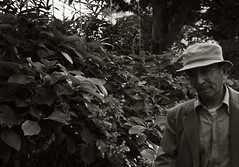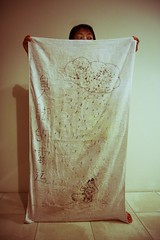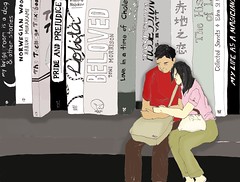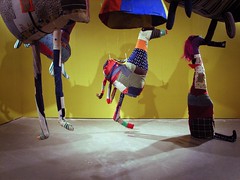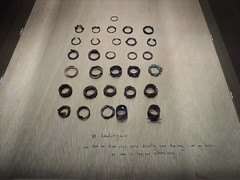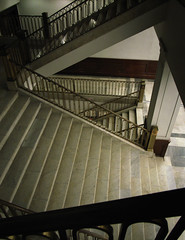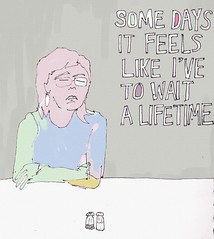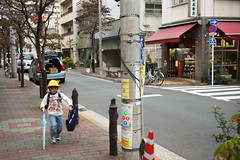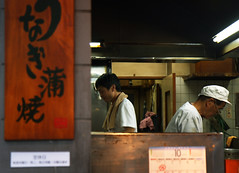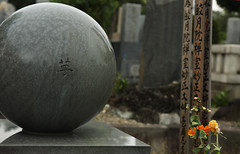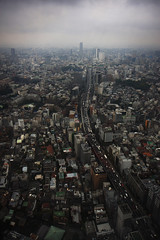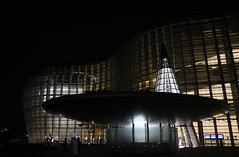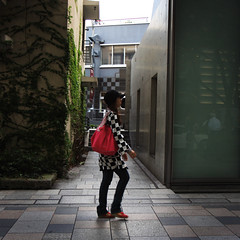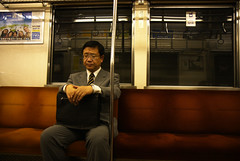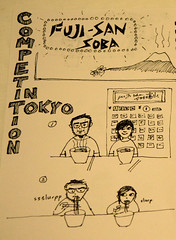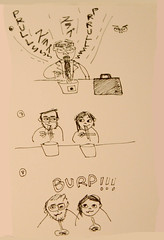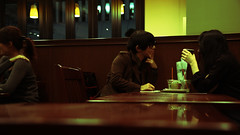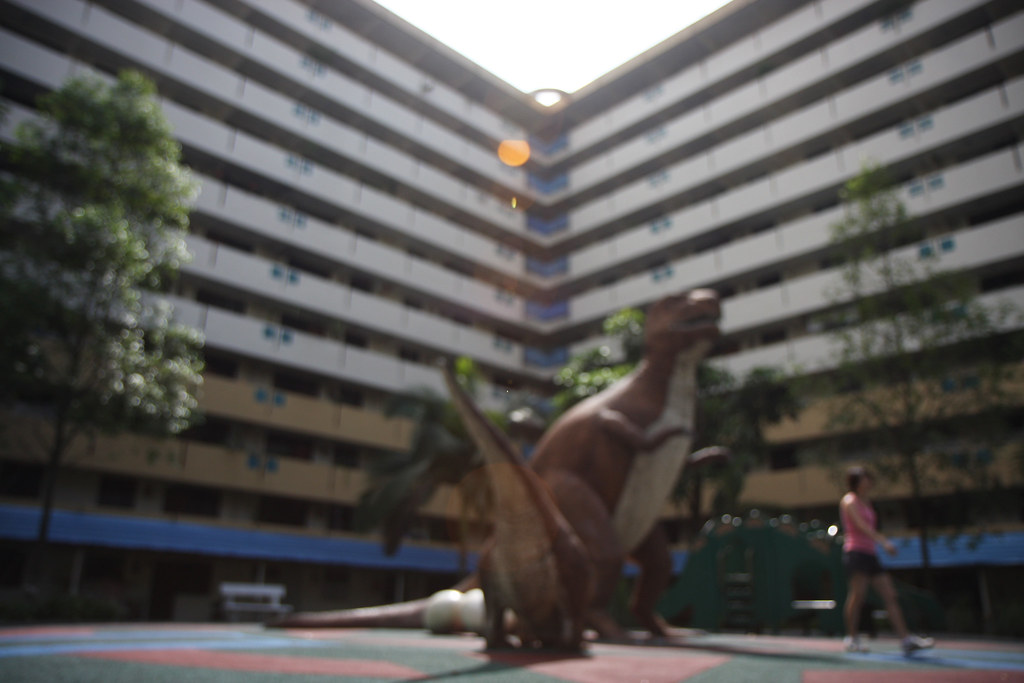
Juraissic age HDB playground at Kim Keat - all images by J
My parents were born on this tropical island. But my father's father was from that most southern of southern China - the godforsaken island of Hainan; and my mother's was probably from Swatow. Pa J on the other hand was actually born in the Hokchia stronghold of Zhang Jian, and had travelled to the Nanyang by boat when he was a boy.
On our tiny city-state, the idea of a hometown may have little meaning. Ask a Singaporean "where were you born?", and the answer would probably just be "XYZ Hospital" instead of "XYZ Village/Town/City/Country". This would, of course, change with more new migrants.
Still, since we were both on leave from work, this morning J and I decided to put on our domestic tourist tags and go visit what comes closest to being our hometown - the neighbourhood of Bendemeer!
The walk from Toa Payoh to Bendemeer brought us through the flats of Kim Keat guarded by 2 dinosaurs (what was going through the minds of those Town Council folks who commissioned this?!), through the Shuang Lin Temple, across the Pan Island Expressway to the butterfly-filled fields beside Whampoa Estate, and across the Central Tunnel Expressway to the Towner Estate which is right beside the 4 decade old HDB estate of Bendemeer.

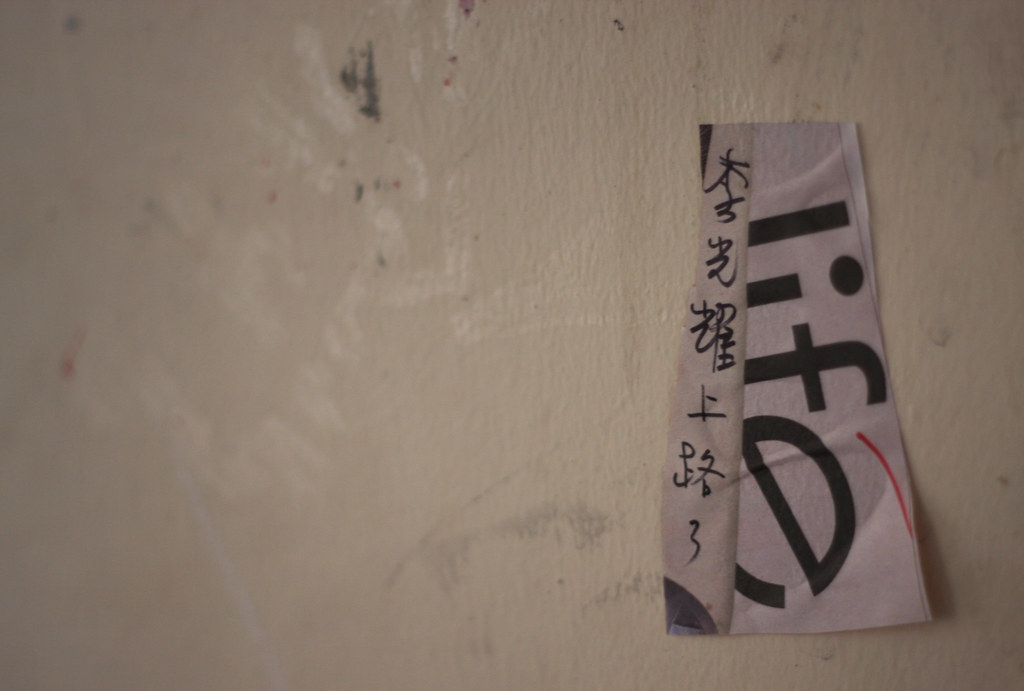
J's corridor playground + Sticker-style graffiti by disgruntled Bendemeer inhabitant
There's nothing romantic about this, just a fact of the smallness of our island that both J and I had actually lived in adjacent blocks of flats in Bendemeer when we were kids.
But I would be dishonest if I said I did not like being able to share with J memories of the same kindergarten, the playground just at the foot of our flats, the same market and food centre, the same provision shop, the same stationer's with its glass cabinets of colourful erasers and pencil sharpeners we would gaze at, the same Lao Fuzi comics by the barber/hairdresser, the same beautiful mosaic-tiled wall of the adults' United Overseas Bank...
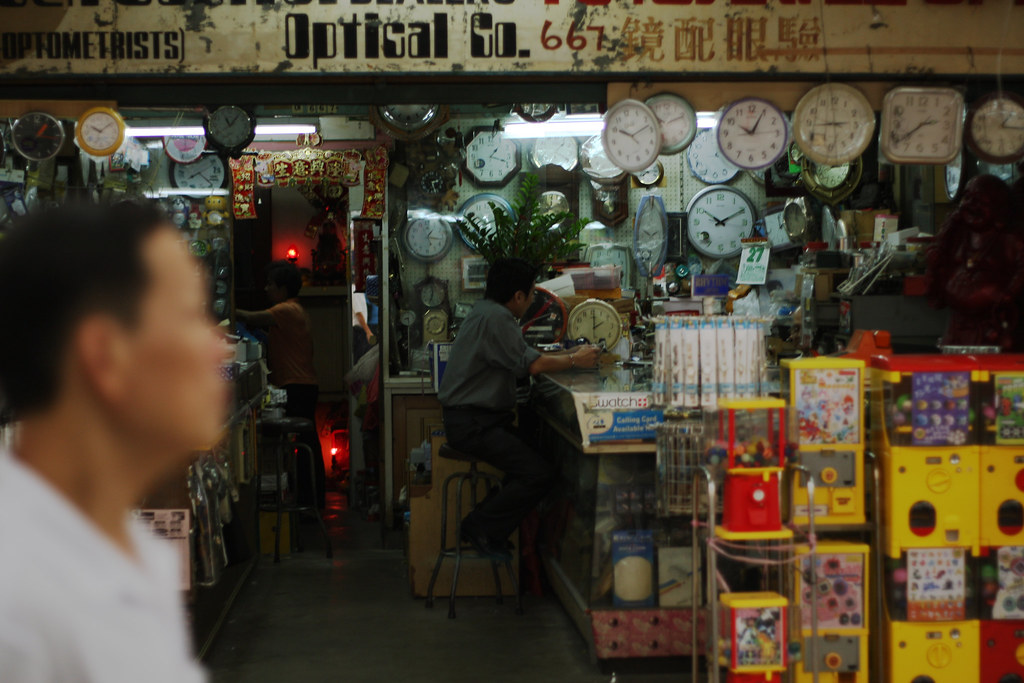
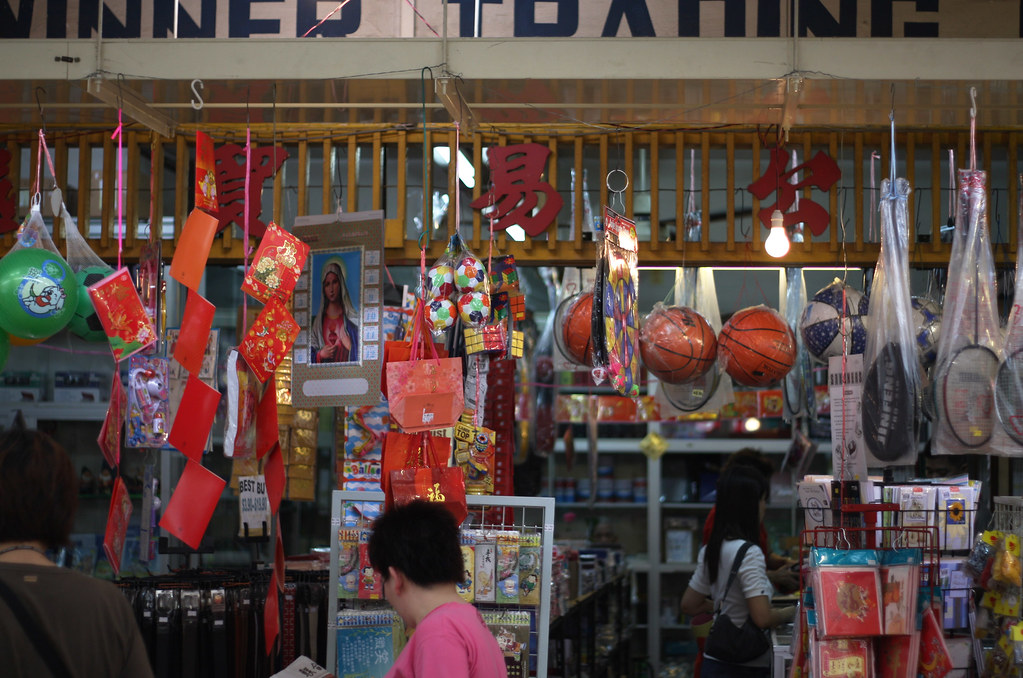
surviving the times
But taking away these particular memories, our experiences were vastly different. I with my Grandma, and J with his family of 7 siblings. Admittedly, J seemed to have more varied and colourful relationships with the neighbourhood and its inhabitants and merchants.
It is also a fact of this island's life that the neighbourhood of your childhood memories will not stay unchanged through time. And perhaps a particular aesthetic of memory would evolve given all this. I don't mean a hazy, warm-fuzzy-feeling sort of nostalgia-influenced aesthetic. But a kind of aesthetic where materiality and time will lock arms, tightly.
===========
p/s Domestic Tourism food tips
If you are in Bendemeer, visit its market and food centre for yummy fried carrot cake (the black sauce kind) at stall 01-35 and the famously ungrammatical "Eat-May-Know" rojak. To get to Bendemeer, take the North-East line and drop off at Boon Keng Station.


